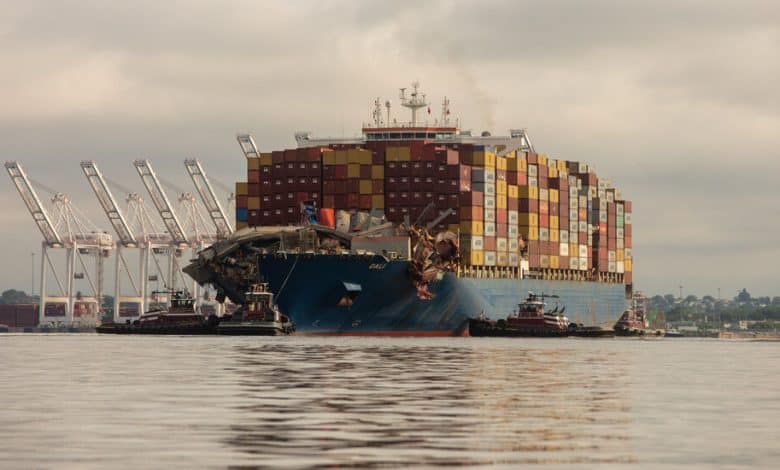Cargo Ship That Crashed Into Baltimore Bridge Heads Back to Port

Nearly eight weeks after it rammed into the Francis Scott Key Bridge, tearing down a Baltimore landmark but becoming a fixture on the horizon itself, the container ship Dali is afloat again. More than an hour after an expected 5:30 a.m. start, the ship, surrounded by tugboats, began a two-and-a-half mile journey back to a berth in the Port of Baltimore.
The moving of the Dali is a crucial step in the effort to fully reopen the main channel to the port, which was blocked in the early hours of March 26, when the Dali lost power and hit the bridge. The bridge collapsed on impact, killing six workers doing repairs on the bridge roadway, clogging the waterway with around 50,000 tons of metal and debris, and disrupting the commerce of one of the nation’s key shipping hubs.
The salvage and recovery operation has involved more than a thousand workers and scores of barges, cranes, helicopters and Coast Guard cutters. Access to and from the port has returned piecemeal: On April 1, a temporary channel opened with a depth of 11 feet; in the days and weeks since, other channels were opened with depths of 14, 20 and 45 feet.
But while hundreds of ships have used those alternate routes, returning the port to its usual traffic requires the opening of the permanent channel, which is 50 feet deep and 700 feet wide. Authorities set a goal of reopening that channel by the end of May.
Moving the 947-foot-long Dali is a complex and risky task, given that the ship was pinned in place by thousands of tons of mangled steel. Cranes removed 182 of the 4,700 containers on the ship, some of which were intertwined with the wreckage of the bridge. Last Monday, crews detonated small charges that had been placed around a massive section of bridge lying across the bow of the Dali, sending the section sliding into the water beneath a plume of black smoke.
In the week that followed, sonar specialists and dive teams inspected the area around the ship for submerged and unstable wreckage, with cranes removing debris that could pose a risk. The final preparation to move the ship began Sunday afternoon, officials said, and it involved releasing mooring lines, lifting anchors and removing some of the hundreds of thousands of gallons of water that had been pumped into the ship as ballast to add stability.




